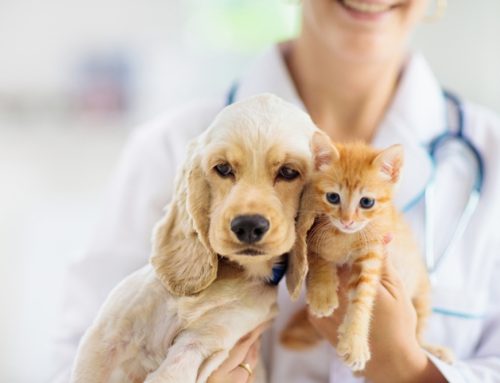Pets and children can be the best of friends while growing up together, but sometimes what seems like fun playtime from the child’s perspective can be uncomfortable for the pet and can lead to potentially dire consequences.
We’ve all seen the adorable pictures: cats dressed up in baby clothes and being pushed around in strollers, or children bouncing up and down on the backs of large dogs. But, do you see the wide eyes and pulled-back ears begging for help? As a pet owner, you are your pet’s biggest advocate. You are responsible for their comfort and safety. And, as a parent, you have to do everything you can to keep your child safe. Keeping your family—human and furry—safe begins with education.
Reasons pets bite
Any pet can bite at any time. Even the cutest, sweetest, little dog can nip at a person who makes her uncomfortable or accidentally hurts her. Each year in the U.S., nearly 5 million people are bitten by cats and dogs. Children are most at risk, especially in the home—72 percent of children have been bitten by a dog they knew. Why would a familiar family pet be the most likely to lash out? Reasons can include:
● Feeling threatened
● Being startled, especially while sleeping
● Defending herself or her territory
● Protecting food or toys
● Guarding a person
● Injury or illness
● Becoming overly excited during play
Warning signs
Some signs that your dog is becoming uncomfortable or anxious and might bite include:
● Tight or tense facial expression
● Wide-eyed stare, usually from the corners of the eyes (also known as “whale eye”)
● Panting without exercise or a high temperature
● Turning her head or body away, usually while lifting up a front leg
● Licking her lips
● Yawning
● Snarling
● Making efforts to escape, or standing very still
● Ears flat against the head
● Tucked tail
● Furrowed brow
Many pet owners have said that their pet bit out of the blue with no warning, but that rarely happens. Pets show many warning signals before they lash out, but most people are not practiced in reading their dog’s body language. If you see any of these signs, immediately remove your pet from the situation to prevent a bite.
Top ways to prevent bites to children
1. Never leave a child and a pet alone together. Even if it’s only for a second, an accident can happen.
2. Never have children, pets, and food in the same room. While a child is eating, a dog can come up and attempt to snatch it out of the child’s hands, possibly biting a hand at the same time. The same is true for a pet. If she is eating from her dish or chewing on a treat, a child coming nearby can be threatening and make the pet attempt to guard her food.
3. Do not let a child grab toys away from a pet. Teach the pet to drop the toy first, and wait for it to be thrown if playing fetch. Tug-of-war games are never a good idea with a dog and a small child.
4. Children are loud and unpredictable. Reward your pet with a tasty treat if she handles scary noises from children well.
5. Never allow a child to approach a resting animal, whether she is sleeping or not. Always allow the pet to make the first approach, and let her leave when she has had enough.
6. Provide your pet with a safe place all her own that children are taught to leave alone. A bed or kennel in a quiet bedroom for a dog or a high perch for a cat is ideal for quiet resting time.
7. Teach children appropriate petting techniques for animals. Never allow hard patting or grabbing at ears, whiskers, or tails.
Just like people, animals rely on body gestures, postures, and vocalizations to communicate. Learn these body language signals, and the specific ways your pet shows stress or anxiety, so you’ll know when to intervene during an unsafe situation.
Questions about animal body language or safe interactions between a child and a pet? Call us at 615-444-4422.








Leave A Comment